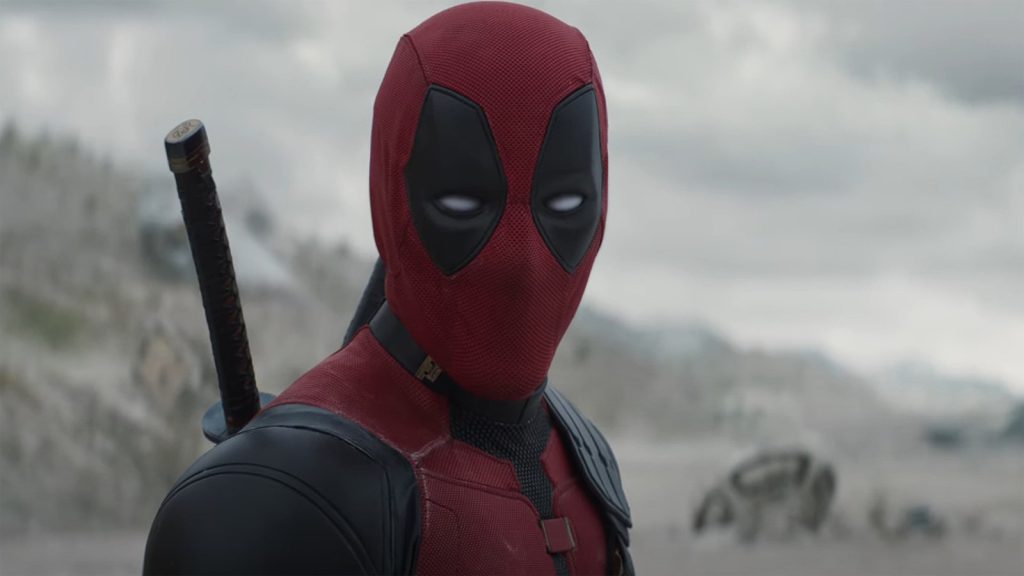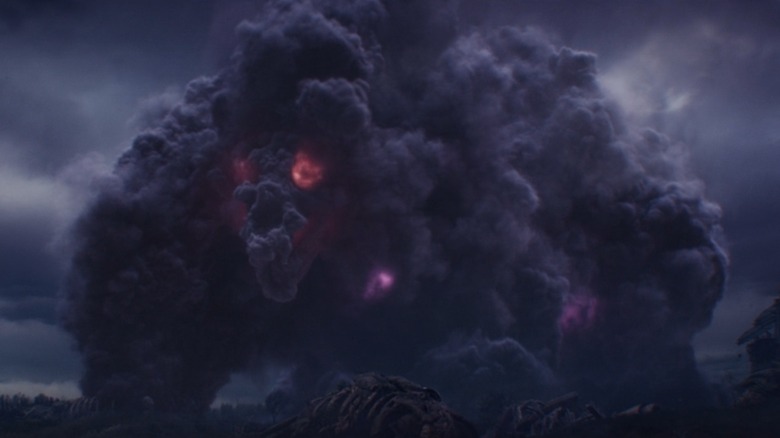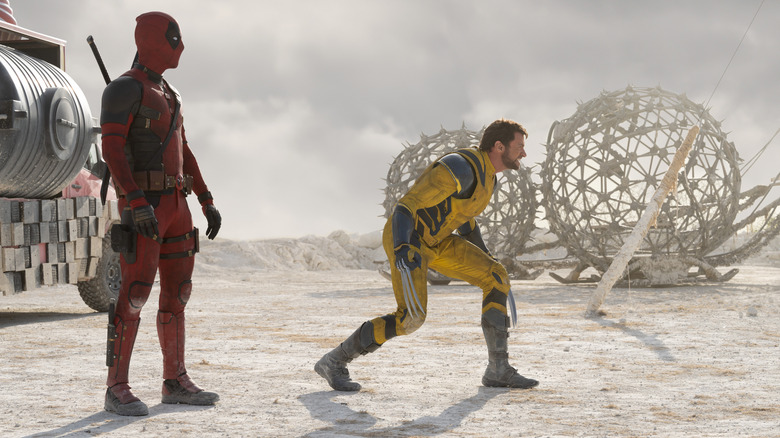Loki’s Cloud Monster Alioth Explained

Watch it, Bub. This article contains major spoilers for “Deadpool & Wolverine.”
It only took the better part of a decade, but Ryan Reynolds’ Deadpool has officially joined the Marvel Cinematic Universe and the new status quo couldn’t possibly be weirder as a result. Theoretically, the foul-mouthed Merc who now calls himself “Marvel Jesus” could pop up in any Marvel installment from this point onwards, spreading his particular brand of chaos to every corner of the multiverse. Because of this, one would assume that his first outing in the MCU would thus feel completely different from any other Marvel movie … but that’s not quite true.
As the fourth wall-breaking title character observes on several occasions, “Deadpool & Wolverine” still involves plenty of ham-fisted exposition, an endless parade of cameos and plot McGuffins, and Easter eggs galore meant to stroke the egos of the most hardcore comic book nerds out there. Additionally, the film continues the trend of Marvel movies requiring audiences to do a fair amount of homework in order to understand every character, location, and plot detail featured throughout the runtime. References to obscure bits of lore are one thing, but requiring a working knowledge of the events of the Disney+ spinoff series “Loki,” for example, is quite another.
Granted, it’s easy enough to just go along with the early info dump about the Time Variance Authority, the Sacred Timeline, the Void, and so on. But the rather abrupt and matter-of-fact inclusion of a key plot device from “Loki” — the destructive being known as Alioth — might leave some fans scratching their heads. Here’s everything you need to know about the big, purple cloud monster constantly hanging out in the background of “Deadpool & Wolverine.”
Meet Alioth, the sentient trash compactor from ‘Loki’
Look, far be it from any of us to mock some of the more outlandish aspects of Marvel Comics. Kevin Feige, Robert Downey, Jr., and a gaggle of all-important shareholders all owe much of their fortunes to these silly children’s stories, after all. Heck, entire websites and hordes of pop-culture writers depend on these popular IPs as a steady source of clicks. But if Deadpool can poke some lighthearted fun at such nerdy concepts, then so can I. It’s in that spirit that I’m forcing us to acknowledge Alioth for exactly what he is: basically, a sentient trash compactor.
For those who felt a little lost when “Deadpool & Wolverine” randomly threw this wild card into the mix during the scenes set in the Void, allow me to clear things up a bit. As Deadpool himself snidely noted, Alioth’s introduction in the MCU came when he popped up in episode 5 of the first season of “Loki.” Our favorite God of Mischief — or, more accurately, the variant of his who ends up stealing the Tesseract during the time-traveling hijinks of “Avengers: Endgame” — finds himself kidnapped from his timeline and thrown at the mercy of the TVA early in “Loki” season 1. After causing all sorts of problems, he ends up “pruned” and deposited in the vast emptiness of the Void, which is essentially a repository for troublemaking variants who unleash chaos upon the Sacred Timeline.
Alioth is explained to be a watchdog of sorts, an entity that cleans up the trash and prevents anyone from escaping the Void. We later find out was created during a great Temporal War and ultimately controlled by the villainous He Who Remains (played by the now-disgraced Jonathan Majors), guarding the way to his Citadel.
How Alioth factors into ‘Deadpool & Wolverine’
Consider this one (extremely minor) mystery solved. After Loki (Tom Hiddleston) was unable to prevent his variant Sylvie (Sophia Di Martino) from killing He Who Remains at the end of “Loki” season 1, it was fair to wonder what effect this might’ve had on the Void. Apparently? Nothing. If we take Cassandra Nova’s (Emma Corrin) backstory as established in “Deadpool & Wolverine” at its word, Cassandra was always ruling as some sort of warlord out in the Void, even during the events of “Loki.” (Although, perhaps the removal of He Who Remains made it easier for Cassandra to dominate the Void). As for Alioth, he simply continues to roam the wasteland despite no longer having to guard the Citadel at the End of Time, happily gobbling up whichever poor variants he can get his paws on. This almost includes Deadpool, Wolverine, and their friends on numerous occasions throughout the film, but Alioth doesn’t seem to be too effective at his job anymore. There’s no shame in retiring and riding off into that sunset in the twilight of your career, champ!
Between Alioth and the oddly unexplained appearance of Hunter B-15 (Wunmi Mosaku) later in the film, fans might find themselves wishing they’d caught up on both seasons of “Loki” (or at least one of those recap videos floating around on YouTube) while prepping for the release of “Deadpool & Wolverine.” To be fair, that marathon would also have to include both previous “Deadpool” movies, most of the “X-Men” and “Wolverine” movies from the 20th Century Fox franchise, the “Fantastic Four” films, “Loki,” and many of the MCU movies … and, look, life’s just too short for that. So have this handy explainer, instead! You’re welcome.
“Deadpool & Wolverine” is now playing in theaters.







